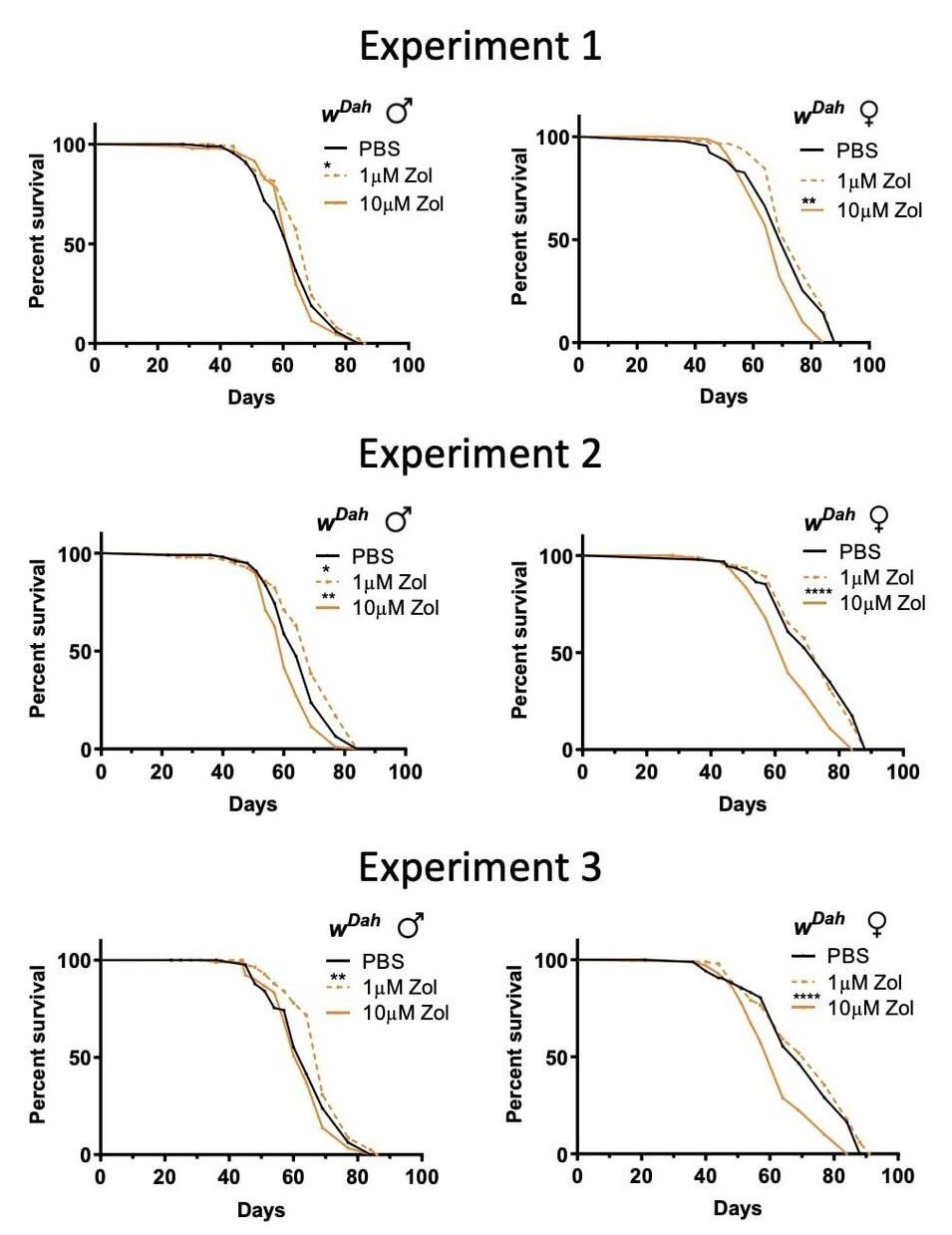Zoledronate is a biophosphonate, a drug used to strengthen bones and reduce the risk of osteoporosis-related bone fractures. It is well-absorbed into the bones, so it only needs to be administered through infusion once a year.
A 2010 study had found that people who were given zoledronate after experiencing hip fractures showed slightly reduced all-cause mortality compared to a control group. Patients who took the drug were at significantly lower risk for heart arrhythmias and pneumonia.
As this is a drug that is already being given to people, the choice to go back to genetically modified fruit flies, a much simpler model of aging, may seem counterintuitive. The team chose to test these insects for two principal reasons. The first is that Drosophila flies are a common subject of studies on basic aging pathways, which the researchers wished to explore. The second is simpler: Drosophila flies lack bones, making the bone-affecting properties of zoledronate irrelevant to the study.
